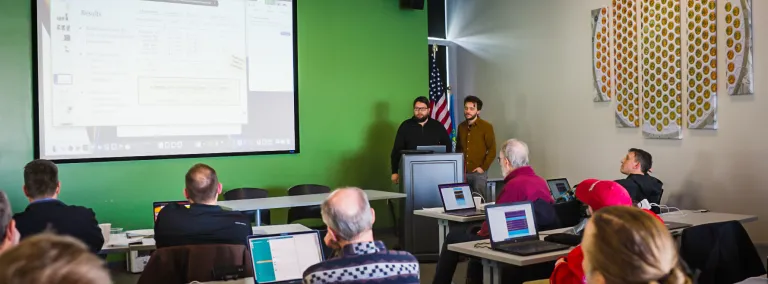Researchers searching for decay of nature’s rarest isotope announce initial measurements
The experiment surpassed previous measurements by two orders of magnitude, has potential to measure the decay of tantalum-180
On Feb. 23, researchers announced initial measurements from an experiment searching for the decay of metastable isomer tantalum-180. The measurements were based on the first 229 days of data-taking from the experiment located nearly a mile underground at the Sanford Underground Research Facility (SURF) in Lead, South Dakota.
The initial results show that the experiment is nearly two orders of magnitude more sensitive than previous experiments and has a strong potential to discover the decay.
“This initial run revealed that we have a solid experiment and that the experiment is operating within our expectations,” said Ralph Massarczyk, principal investigator (PI) at Los Alamos National Laboratory (Los Alamos). This research is supported by the Laboratory Directed Research and Development program of Los Alamos.
“We are well on track to making the measurement we set out to make,” said Sam Meijer, co-PI and staff scientist at Los Alamos. “We have really low backgrounds, a high efficiency for detection, and we’re accumulating data faster than anyone else.”
With an estimated half-life of 1017 to 1018 years, tantalum-180m is the only unobserved metastable decay; all other metastable isomers have been observed to decay in a laboratory environment.
Researchers repurposed the Majorana Demonstrator, originally a neutrinoless double-beta decay experiment, to search for the decay of tantalum-180m. The Majorana Demonstrator was built with radio-pure materials and was operated with stringent cleanliness protocols. By repurposing the detector, the group improved on previous measurements with unprecedented speed.
“If you look at the timeline of the search for this decay, it has taken previous experiments decades to improve measurements by an order of magnitude. In less than a year, we’ve pushed the measurement by almost two orders of magnitude, which is a big improvement,” Massarczyk said.
The collaboration estimates that the experiment will be able to measure the half-life of tantalum-180m with a final sensitivity of greater than 1019 years.
Massarczyk said that this dramatic improvement was made possible by the unique facility at SURF, as well as the cleanliness procedures and performance of the Majorana Demonstrator.
The experiment’s initial measurements were presented during a livestreamed webinar on Thursday, Feb. 23, and will be submitted for publication this spring. Watch the full webinar recording on YouTube or below (Massarczyk's presentation begins at 40:00).
The broad physics program of the Majorana Demonstrator at SURF: Final results and new directions from Sanford Lab on Vimeo.
